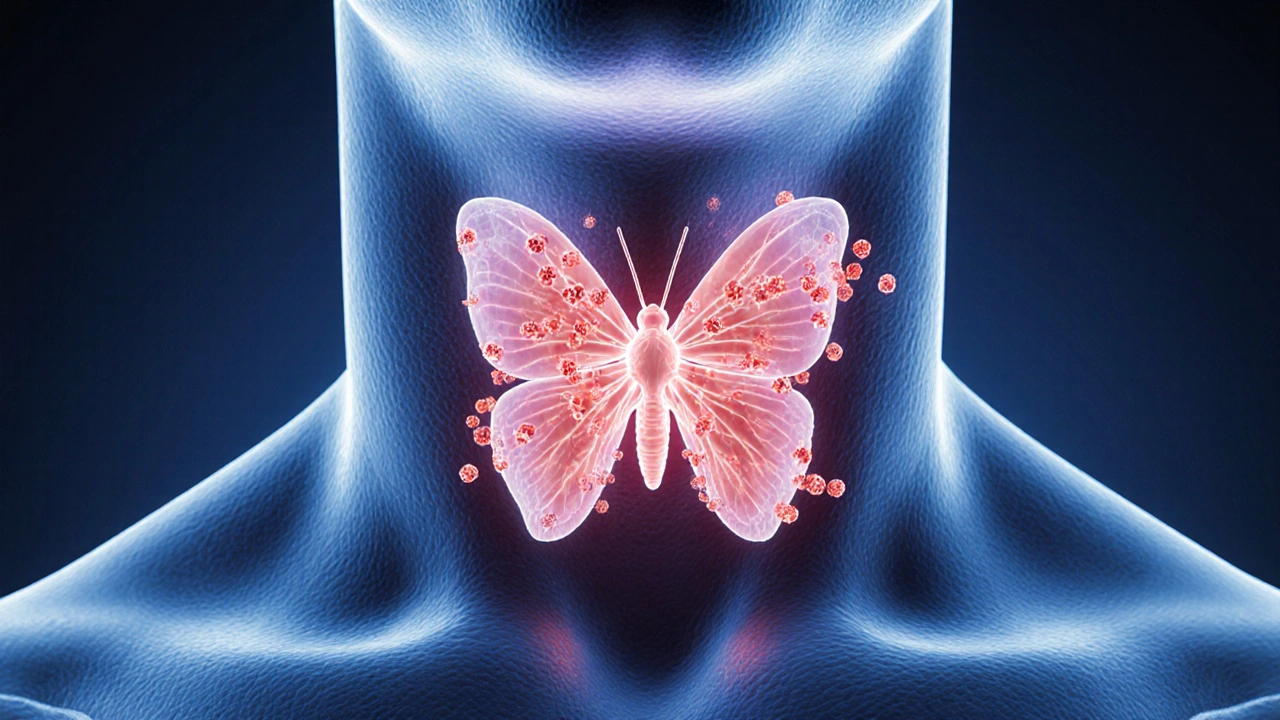
Key Takeaways
- Graves' disease is an autoimmune form of hyperthyroidism that attacks the thyroid gland.
- Typical signs include rapid heartbeat, weight loss, heat intolerance, and eye changes.
- Blood tests (TSH, free T4, antibodies) and imaging confirm the diagnosis.
- First‑line treatments are antithyroid medicines, radioactive iodine, or surgery, chosen per patient profile.
- Lifestyle tweaks-stress reduction, balanced diet, and regular monitoring-improve long‑term outcomes.
When you hear the term Graves' disease is a chronic autoimmune condition that triggers hyperactive thyroid function, the medical jargon can feel overwhelming. This guide cuts through the technical speak, giving beginners a clear picture of what the disease does, how it’s spotted, and what you can actually do about it.
What Exactly Is Graves' Disease?
Graves' disease belongs to the broader family of autoimmune diseases that cause the immune system to mistake healthy tissue for a threat. In this case, the attackers are antibodies that latch onto the thyroid gland - a butterfly‑shaped organ at the base of the neck that regulates metabolism. The antibodies (often called TSI or TRAb) convince the gland to release excessive thyroid hormones, leading to a state known as hyperthyroidism.
How Hyperthyroidism Shows Up in the Body
Think of thyroid hormones as the body's accelerator. Too much of them speeds everything up: heartbeats race, calorie burn spikes, and the nervous system stays on high alert. That’s why many patients report feeling "wired" even after a full night’s sleep. The over‑production also affects skin, eyes, and bones, creating a cascade of symptoms that vary from person to person.
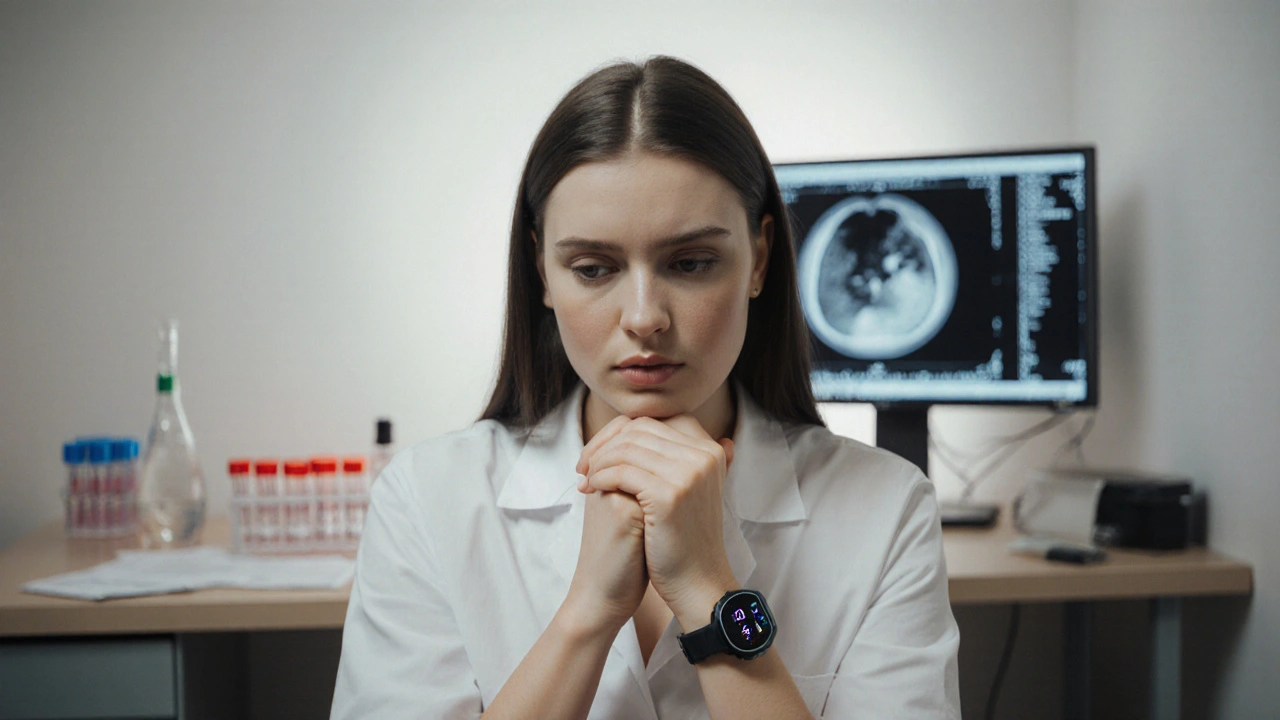
Common Symptoms to Watch For
Symptoms often develop gradually, making them easy to ignore. Below is a quick checklist you can use during a routine self‑exam:
- Unexplained weight loss despite normal or increased appetite
- Rapid or irregular heartbeat (palpitations)
- Heat intolerance and excessive sweating
- Tremor in the hands or fingers
- Difficulty sleeping (insomnia)
- Bulging eyes or gritty sensation - known as Graves' ophthalmopathy
- Swelling on the shins (pretibial myxedema) - less common but distinctive
If you notice several of these signs together, especially the eye changes, it’s worth discussing them with a healthcare professional.
Why Does It Happen? Causes and Risk Factors
Exactly why the immune system turns rogue is still under study, but researchers have identified several contributors:
- Genetics: Family members of someone with Graves' disease have a higher chance of developing it, suggesting inherited susceptibility.
- Smoking: Tobacco exposure dramatically raises the risk of eye involvement and can worsen overall disease activity.
- Stressful events: Major life changes, infections, or postpartum hormonal shifts can act as triggers.
- Gender: Women are affected 5‑10 times more often than men, especially between ages 20‑40.
Understanding these factors helps you gauge personal risk and adopt preventive habits, such as quitting smoking and managing stress.
How Doctors Diagnose Graves' Disease
Diagnosis blends symptom review, physical exam, and a set of targeted tests. The most common laboratory assessments are:
- TSH test - measures thyroid‑stimulating hormone; low levels point to hyperthyroidism.
- Free T4 and T3 - elevated hormone levels confirm the gland’s overactivity.
- Thyroid‑stimulating immunoglobulin (TSI) or TSH‑receptor antibody (TRAb) tests - positive results are highly specific for Graves' disease.
Imaging may also be requested. A radioactive iodine uptake scan shows how much iodine the thyroid absorbs, differentiating Graves' disease from other causes of hyperthyroidism. Ultrasound can reveal gland size and nodules.
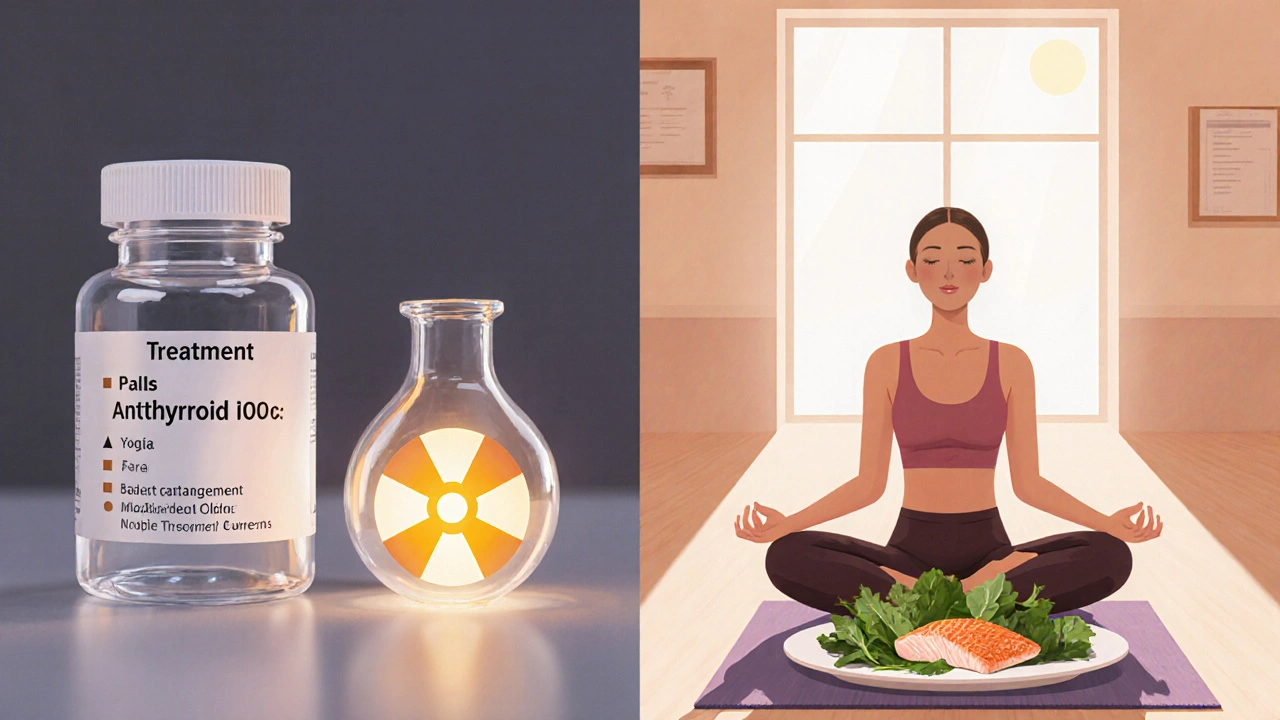
Treatment Options: Choosing the Right Path
Managing Graves' disease aims to restore normal hormone levels, relieve symptoms, and prevent complications. Three main therapeutic routes exist, each with pros and cons. The following table breaks down the key attributes.
| Treatment | How It Works | Typical Duration | Common Side Effects | Best For |
|---|---|---|---|---|
| Antithyroid medication | Blocks hormone synthesis (e.g., methimazole, propylthiouracil) | 6‑24 months, sometimes longer | Skin rash, liver dysfunction, rare agranulocytosis | Patients who want to avoid radiation or surgery; pregnant women (propylthiouracil preferred early pregnancy) |
| Radioactive iodine therapy (RAI) | Oral iodine‑131 destroys overactive thyroid cells | Single dose; effect seen 4‑12 weeks | Worsening eye disease, temporary hypothyroidism | Adults without severe eye involvement; those seeking a one‑time cure |
| Surgical removal (thyroidectomy) | Partial or total removal of the gland | Hospital stay 1‑2 days; recovery 2‑4 weeks | Bleeding, damage to vocal cords or parathyroid glands | Large goiters, suspicion of cancer, or intolerance to other treatments |
Doctors usually start with antithyroid drugs because they are reversible and allow time to assess disease activity. If medication fails or side effects emerge, RAI or surgery become viable alternatives.
Managing Daily Life with Graves' Disease
Beyond medical therapy, everyday habits influence how well you feel:
- Nutrition: Opt for a balanced diet rich in calcium and vitamin D to protect bone density, which can suffer from long‑term excess thyroid hormone.
- Exercise: Low‑impact activities such as walking, yoga, or swimming help control heart rate and reduce stress.
- Stress control: Mindfulness, breathing techniques, or counseling can lessen flare‑ups, especially since stress is a known trigger.
- Regular monitoring: Blood work every 4‑6 weeks during treatment adjustments ensures hormone levels stay in the target range.
- Avoid smoking: Quitting dramatically improves eye symptoms and overall disease prognosis.
Remember that every person’s journey is unique. Keep an open line with your endocrinologist, and don’t hesitate to ask questions about medication dosage, side effects, or lifestyle tweaks.
Frequently Asked Questions
Can Graves' disease be cured?
While the underlying autoimmune process often persists, most patients achieve long‑term remission after treatment. Radioactive iodine or surgery can provide a permanent solution, but regular follow‑up remains essential.
Is it safe to get pregnant while on antithyroid medication?
Yes, with careful monitoring. Methimazole is usually avoided in the first trimester due to rare birth‑defect risks; propylthiouracil is preferred during early pregnancy, then switched later.
Why do some patients develop eye problems?
Graves' ophthalmopathy results from immune cells attacking tissues behind the eyes, causing inflammation and swelling. Smoking and high antibody levels increase risk. Early treatment with steroids or targeted biologics can help.
Will I need lifelong medication after treatment?
If you receive radioactive iodine or have a thyroidectomy, you’ll likely need lifelong thyroid‑hormone replacement (levothyroxine). Those who stay on antithyroid drugs may eventually taper off, but many require periodic reassessment.
How fast do symptoms improve after treatment starts?
Antithyroid meds often bring relief within a few weeks. Radioactive iodine may take 1‑3 months for full effect, and surgical patients notice immediate drops in hormone levels but may need a few days to feel better.
Understanding Graves' disease equips you to recognize early signs, seek timely care, and partner with your doctor on a personalized treatment plan. With the right mix of medication, lifestyle choices, and monitoring, most people lead full, active lives.

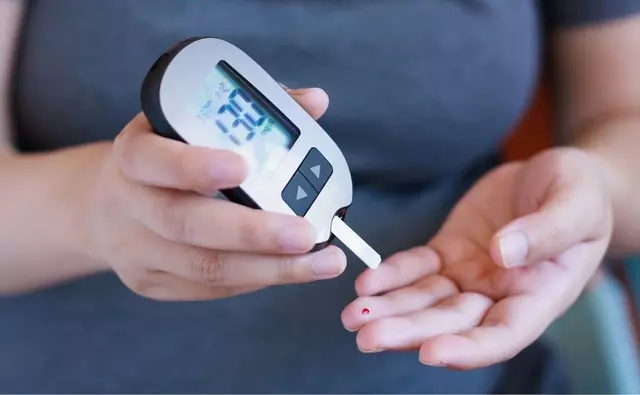
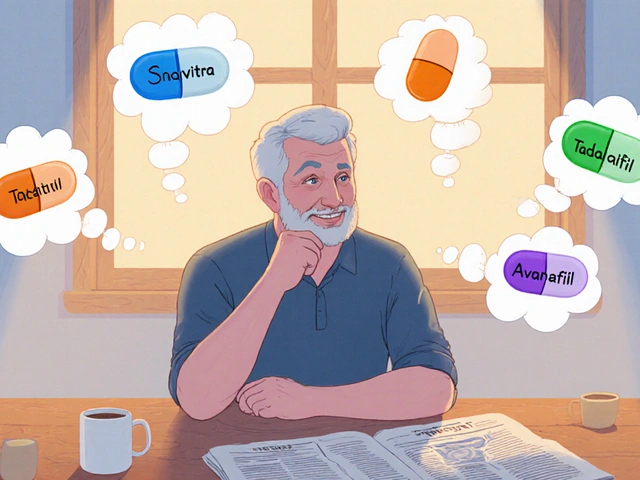
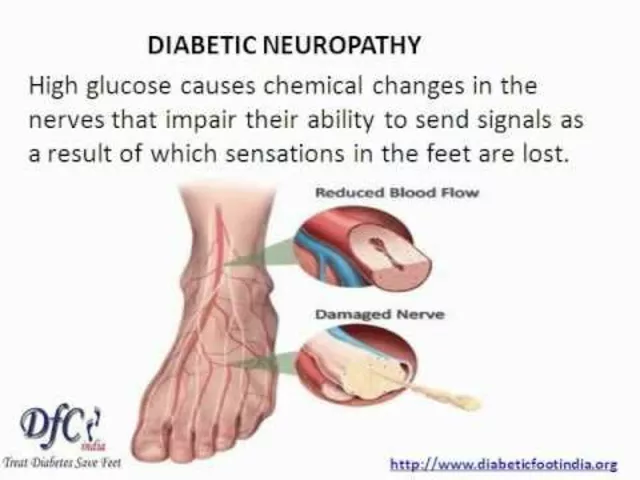
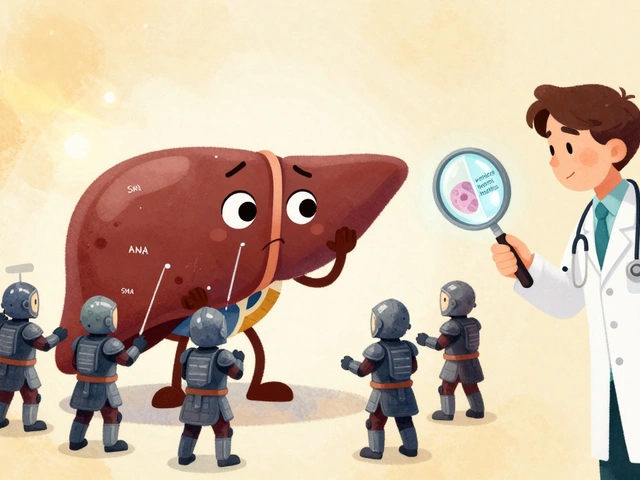


Dawna Rand
October 13, 2025 AT 20:13Hey there! 🌟 If you’ve just stumbled upon this guide, think of it as a friendly map through the thyroid jungle – vivid, colorful, and totally doable. The key is to remember that lifestyle tweaks, like a balanced diet and stress‑busting hobbies, can truly boost your treatment outcomes. 💪 Keep an eye on those eye symptoms, and don’t let smoking sneak back in; your eyes will thank you! 🎉 You’ve got this, and we’re all cheering you on. 😊
rohit kulkarni
October 18, 2025 AT 22:26Graves’ disease, at its essence, represents an elegant yet tragic miscommunication between the immune system and the endocrine axis; the auto‑antibodies masquerade as beneficial stimulators, yet they inexorably drive the thyroid into a state of relentless overproduction. One might liken this to a symphony where every instrument plays at maximum volume, drowning out the subtle nuances of homeostasis. The resultant hyperthyroidism precipitates a cascade of physiological perturbations – tachycardia, heat intolerance, and neuro‑excitability among them – each reinforcing the other in a feedback loop of perpetual motion. Clinicians, therefore, must adopt a multi‑pronged diagnostic approach, beginning with a serum TSH measurement that typically lies depressed, followed by free T4 and T3 assays which reveal the hormonal excess. Antibody panels, specifically TSI or TRAb, serve as the definitive fingerprint of Graves’ pathology, confirming the autoimmune etiology. Imaging, such as a radioactive iodine uptake scan, not only delineates the functional activity of the gland but also differentiates Graves’ from toxic nodular goiters, a distinction of paramount therapeutic importance. Therapeutic options, ranging from antithyroid drugs to radioactive iodine ablation, demand careful patient‑centred selection, considering factors such as age, comorbidities, and ocular involvement. Antithyroid medications, like methimazole, inhibit hormone synthesis by targeting the peroxidase enzyme, yet they carry rare but serious risks of agranulocytosis, necessitating vigilant monitoring. Radioactive iodine, administered orally, leverages the thyroid’s avidity for iodine to deliver targeted cytotoxicity, though it may exacerbate ophthalmopathy in susceptible individuals. Surgical intervention, while invasive, provides definitive control for large goiters or refractory disease, but it introduces risks to the recurrent laryngeal nerve and parathyroid glands, requiring skilled hands. Post‑treatment, many patients transition to levothyroxine replacement, a testament to the lifelong stewardship of thyroid health. Lifestyle modifications, encompassing smoking cessation, stress reduction, and adequate calcium‑vitamin D intake, act synergistically with medical therapy, attenuating disease activity and safeguarding bone density. Moreover, the psychosocial dimension cannot be ignored; patients often report mood fluctuations and cognitive fog, underscoring the need for holistic support. In sum, Graves’ disease is a complex interplay of immunology, endocrinology, and patient lifestyle, demanding a nuanced, individualized management plan; only through such diligence can one hope to restore equilibrium and improve quality of life.
RONEY AHAMED
October 24, 2025 AT 00:39Wow, that’s a solid rundown. If you’re feeling wired, try low‑impact cardio and keep an eye on your heart rate. Simple changes can make a big difference.
Lydia Conier
October 29, 2025 AT 02:53Hey! I just wanted to add that staying hydrated is super important – sometimes we forget that when we’re rushing around. Also, don’t overlook the power of a good sleep schedule; my thyroid feels a lot calmer when I get 7‑8 hours. Oh, and a tiny typo – “thyroid” not “thyrood”. Keep it up, you’re doing great!
ruth purizaca
November 3, 2025 AT 05:06Honestly, this reads like a textbook.
Shelley Beneteau
November 8, 2025 AT 07:19I appreciate the thoroughness of the guide; the section on eye symptoms was particularly helpful.
Sonya Postnikova
November 13, 2025 AT 09:33Great job breaking down a complex condition into digestible pieces! 👍 While the medical jargon can be daunting, your balanced approach-mixing evidence‑based facts with practical tips-makes it approachable. Keep up the excellent work; this will surely help many newcomers navigate their health journey. 😊
Anna Zawierucha
November 18, 2025 AT 11:46Oh sure, because we all have endless time to read a 15‑page dissertation on thyroid hormones. 🙄
Glenn Gould
November 23, 2025 AT 13:59Yo! This guide is lit, really shows how to takle Graves. Keep droppin the info!
Poonam Sharma
November 28, 2025 AT 16:13Behold! The nefarious onslaught of autoimmunology upon the sovereign gland-a biological insurgency that mirrors the geopolitical machinations of our times. One must recognize that the immunological betrayal is not merely a physiological anomaly but a manifestation of systemic entropy, demanding a resolute, battle‑ready response. The therapeutic arsenal-pharmacologic blockade, ionizing radiance, surgical excision-must be deployed with strategic precision, lest the disease prevail as a tyrannical regime over our metabolic homelands. In the grand theater of medicine, only the most disciplined warriors shall prevail.
ariel javier
December 3, 2025 AT 18:26While your metaphorical flair is noted, the clinical management of Graves’ disease remains grounded in evidence‑based protocols rather than rhetorical grandstanding. Practitioners must prioritize patient safety, adherence to established guidelines, and measurable outcomes over dramatized analogies.
Bryan L
December 8, 2025 AT 20:39I hear you, and I’m sorry if the tone felt harsh. 🌼 Remember that we’re all learning together, and supportive dialogue can make a big difference for anyone navigating this condition. 💙
Effie Chen
December 13, 2025 AT 22:53The guide nicely outlines the role of stress as a trigger; it reminds me that mindfulness practices, such as meditation and paced breathing, can modulate the hypothalamic‑pituitary‑adrenal axis, potentially tempering autoimmune activity. Integrating these techniques alongside medical treatment may offer a more holistic approach.